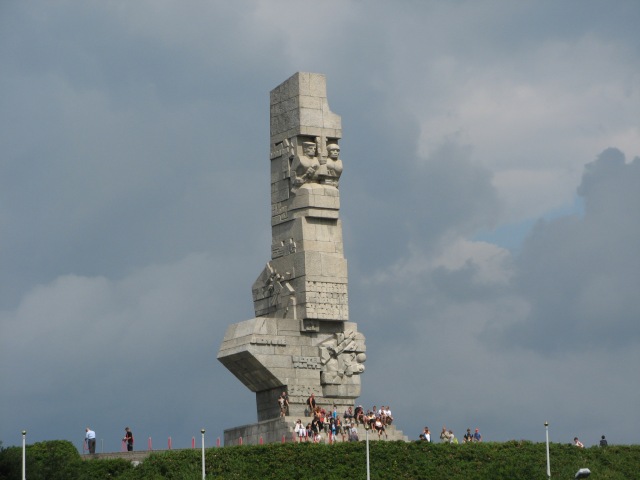
On the 1st September 1939, WW2 started when Germany invaded Poland in Gdansk on a peninsula called Westerplatte (northern Poland). We went past the spot on the boat from Gdansk to Hel and it’s definitely worth a visit for a day tip (with boats on the hour between 10am and 4pm from Gdansk ) to look around the exhibiton and this historic place.
1st September is a big and sad day in the history of Poland and of the World, but to us who have never (and we hope never to) experience those sort of atrocities first hand, it’s also a time to remember the bravery of the Polish soldiers at Westerplatte the time of this sudden invasion.
Every child in Poland will have grown up with their grandparents telling them their story of those times – let’s face it, most kids my age in Poland were in some way raised by their grandparents in the 80s.
My grandparents lived in a village not too far from Warsaw, and they tell me of the time 1st September came, and at 9am they were told – there’s no school today, WW2 has started. They only stayed in school a couple years after that as the Germans started coming to the schools (even the village ones – only vocational schools were allowed), going into the classrooms and picking the tallest most healthy kids to take out to Germany for labour (this was while other soldiers and dogs patrolled the windows so noone could escape) – so it was too dangerous to keep attending. From then on, like other young people, they attended secret teachings that a brave Polish teacher ran in a hut in the forest to learn subjects that were forbidden at the time – Polish language, geography and history as well as other subjects like maths and physics. This was of course a very dangerous thing to do, so they had to keep look-out people in the forest to check for German soldiers. They also had a basement with a trap door where they could all hide if anyone came. It’s a pretty scary thing to imagine in and though I love when they re-tell me the stories, it always gives me goosebumps – how they must’ve got through those times and done all this in secret for 3 years.
It’s interesting to think how education was forbidden, and I think that’s why Poland and Polish people are so proud of their education and many people stay in education for a long time, because they had to go to such lengths once upon a time to get it.
My memories of 1st September extend to 1st day of school when we’d always do assembly and a processions to the nearest WW2 monument to lay flowers and wreaths. I also remember TV programmes and shows being based on WW2 in the 80s – one of the most memorable was a series called ‘4 tank men and a dog’ ( czterej pancerni i pies) from the 1960s/70s – based on the friendship of the soldiers out at war and their well trained dog.
Every time 1st September comes round, it always makes me think (probably a natural in-built Polish mechanism) as it all seems so so long ago – but it’s such an important part of the Polish history. Having been to the Gdansk this summer and the Solidarnosc museum, it also shows you how the Poles survived the years of Russian occupation – as they had to do it before in the 40s, with underground movements and outsmarting the invaders.
Gdansk, being the starting point for WW2 and for Solidarnosc, is a good place to go to find out more about these important times in history.
That’s not to say, Gdansk is only about history – you have to also experience the beauty of this charming city, with it’s great positioning on the Motlawa River and on the Baltic Coast (we love water cities!!!) , the gorgeous architecture, cute cobbled streets and the ample Amber jewellery shops. It’s a definite must for a weekend getaway – something for the history buffs and lovers of beautiful old cities.
Read more about Poland on inlovewithpoland.com.
